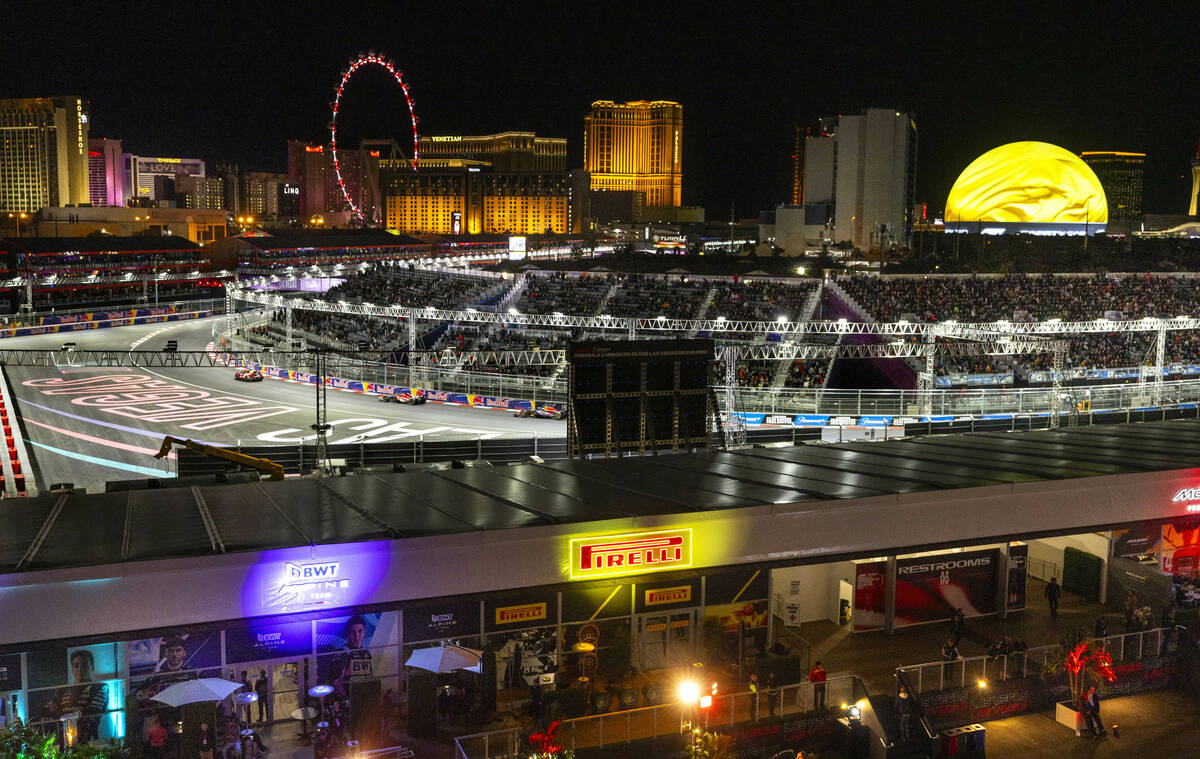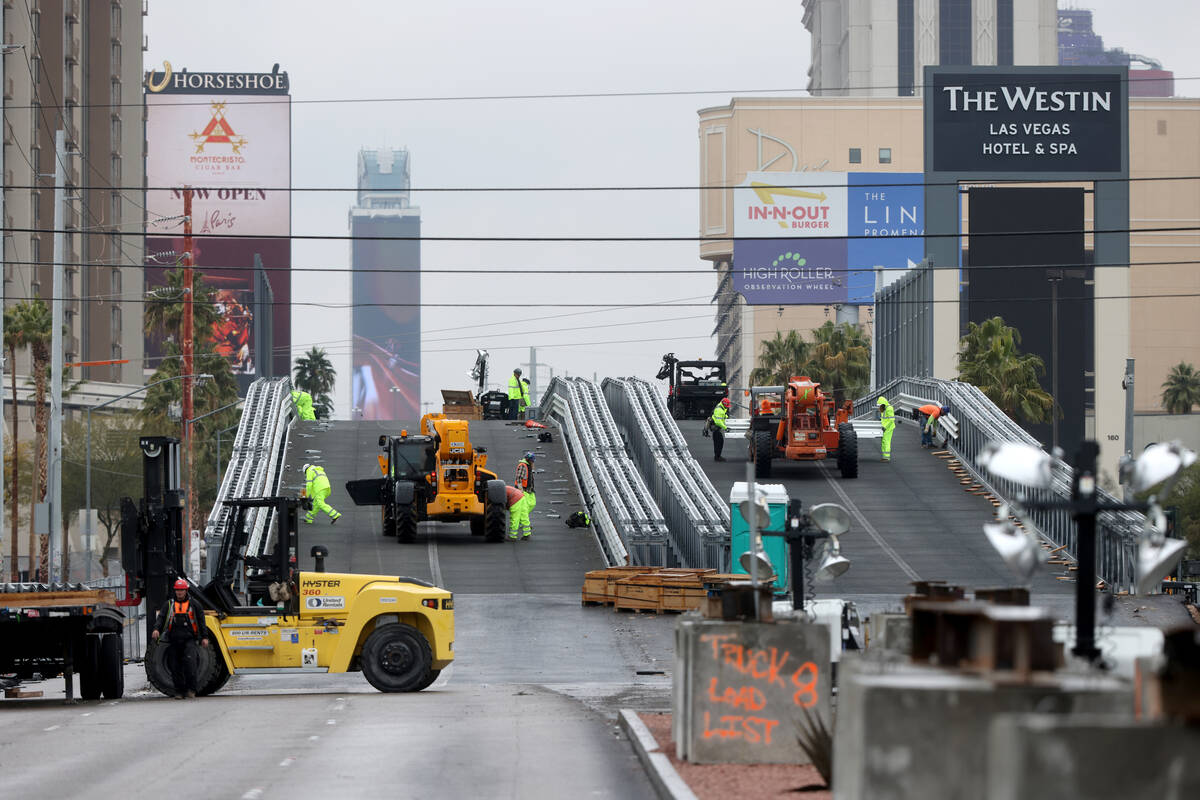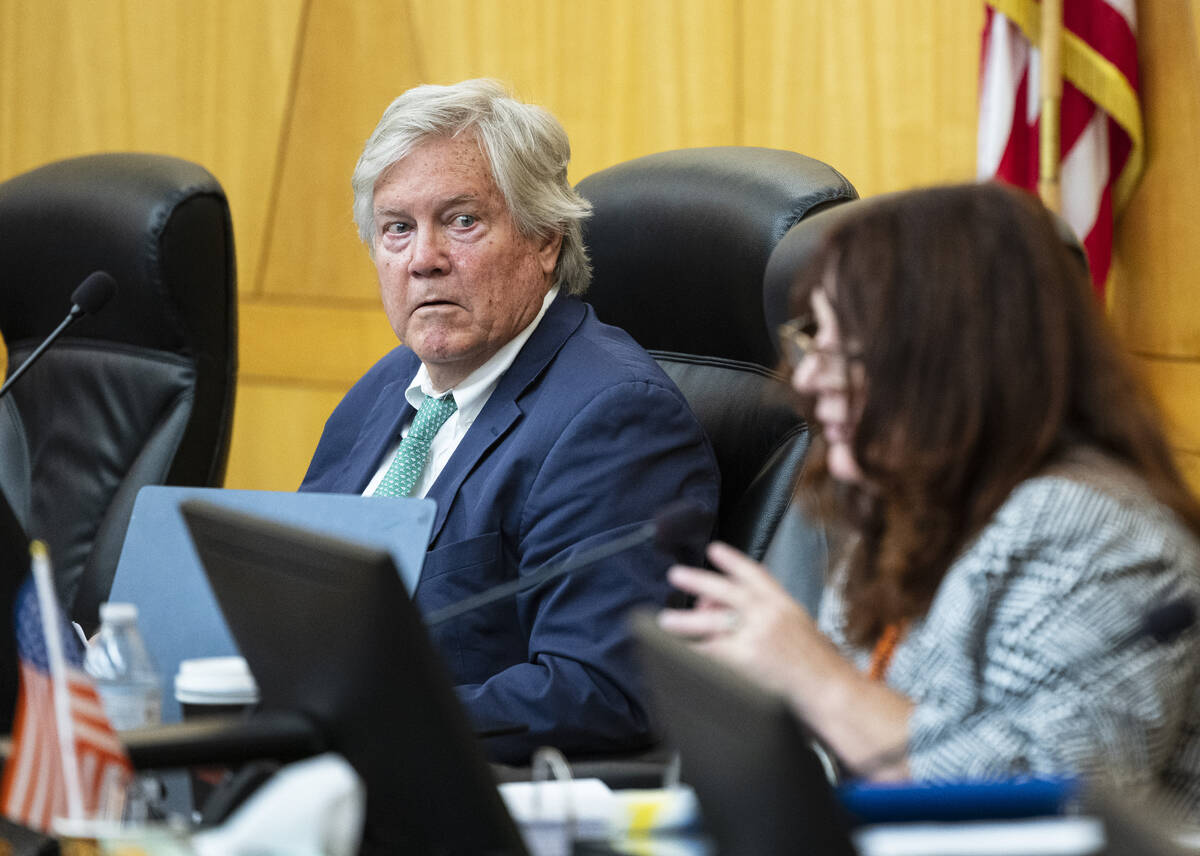‘We never signed a contract’: Clark County seeks to steer F1 course
Clark County never officially signed an agreement with Formula One for the inaugural race on the Strip.
Now Commissioner Tick Segerblom wants county leaders to drive home the county’s role as they prepare for future Las Vegas Grand Prix races.
Update: Clark County pumps brakes on planned discussion of F1 events
Segerblom told the Las Vegas Review-Journal on Thursday that he had planned a discussion at Tuesday’s Board of Clark County Commissioners meeting.
“It turns out that we never signed a contract — that was all with the LVCVA,” Segerblom said Tuesday in a phone conversation with the Las Vegas Review-Journal. “So everybody keeps saying that we’ve got three years. We never committed to three years, to my knowledge.”
Later on Thursday, after the Review-Journal’s story posted online, Clark County spokeswoman Jennifer Cooper said the item would no longer be heard at Tuesday’s meeting.
“It is anticipated that the agenda item for Board discussion on F1 noticed for next Tuesday will be held for a future meeting in the coming weeks to align around the County’s public debrief of the event and the structure for facilitating future races,” Cooper said in an email.
The Las Vegas Convention and Visitors Authority pays $6.5 million per year to put on the race with F1 parent company Liberty Media, through 2025. The two sides have expressed publicly multiple times they hope for the race to continue far beyond the initial three-year agreement.
Last year, Clark County approved recognizing the grand prix as an annual event for at least 10 years, but it didn’t contractually guarantee the race will occur each year. The recognition allows for various ordinances to be waived without additional meetings needed, as long as the race is held the weekend before Thanksgiving.
Segerblom’s sentiment is similar to that made by other commissioners in the months before to the inaugural race in November. Commissioner Marilyn Kirkpatrick aired her displeasure with how the lead-up to the race was carried out at multiple board meetings.
‘One of those things where the tail is wagging the dog’
Despite being the ones who had to approve the majority of the plans and permitting to allow for the race to occur, commissioners felt they were the last to know about several important aspects of the race’s setup before they were tasked to approve them. That included last-minute notifications of pending roadwork that affected traffic for months in-and-around the Strip.
“I think it’s one of those things where the tail is wagging the dog and we’re the dog, so let’s stop tail wagging and take over,” Segerblom said.
Betsy Fretwell, recently hired chief operating officer for the Las Vegas Grand Prix, said they continue to work closely with the county as they prepare for the 2024 race.
“Our team meets regularly with local government representatives to refine and improve our coordination,” Fretwell said in a statement to the Review-Journal. “Similarly, we are working with the LVCVA and community stakeholders to enhance communication, planning and coordination for the event. We are committed to keeping all lines of communication open with our race partners at the County and throughout the local community.”
Formula One asked the county to pay half of the $80 million in infrastructure work that was carried out last year to ready the 3.8-mile track, running mainly on public roads. It remains to be seen what, if any, of the $40 million the county will pay.
“We haven’t agreed to anything,” Segerblom said.
If the county doesn’t agree to open its pocketbook, F1 will have to absorb the entire cost, as they already carried out and paid for the work.
It took nine months from prerace work to tear down, with the majority of those months featuring some type of road impacts in the resort corridor.
Segerblom foresees discussions about the grand prix being a hot topic one ahead of November’s planned race, with the possibility of calling special meetings of the commission to discuss Formula One.
Some business owners whose establishments are located near where a temporary vehicular bridge was constructed on Flamingo Road over Koval Lane have also said they lost millions of dollars because of the race.
The biggest gripe from locals, outside of the associated road work, was that they were priced out to see the race, with the average ticket costing thousands of dollars. Some residents and visitors tried to get a free view of the race by populating sidewalks and pedestrian bridges on Las Vegas Boulevard. Each night of racing, race officials worked to block views of the track from public right of way.
“Should the race be totally covered, or should we allow our voters to see the race,” Segerblom said. “Can we cut back on the number of months that the town is torn up? A lot of stuff happened, and I haven’t met anybody that likes Formula One. So it’s time to kind of find out.”
Race officials have previously addressed one of Segerblom’s questions, saying the work schedule tied to the race’s infrastructure this year will take three months in total, or six months less than the inaugural race. That is largely tied to no major repaving operations needed this year. Ahead of last year’s race, the entire 3.8-mile course, spanning portions of Las Vegas Boulevard, Sands Avenue and Harmon and Koval lanes, had to be repaved twice to meet race requirements.
“We think this will be a substantially less difficult build,” Las Vegas Grand Prix CEO Renee Wilm said last month.
Contact Mick Akers at makers@reviewjournal.com or 702-387-2920. Follow @mickakers on X.

























